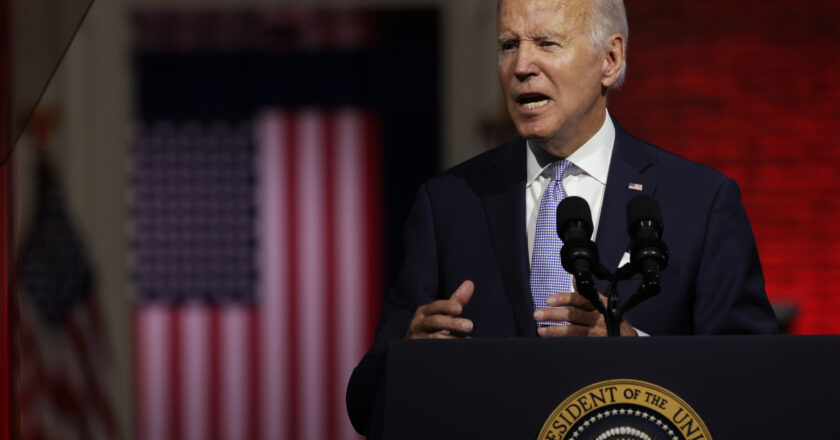On Jan. 5, President Joe Biden came to Montgomery County Community College to give a speech, kicking off his 2024 presidential campaign season. In his speech, he addressed the Jan. 6 attack and Trump’s involvement.
Biden is expressing his need to win Pennsylvania, while the Republicans are going to be fighting against Biden and the Democrats. GA students should prepare for an extremely violent election cycle and understand the key issues to form opinions that they care about, rather than listening to the media.
In President Biden’s speech he used the historic Valley Forge to strengthen his arguments on democracy and how the attacks damaged the idea of what makes America what it is.
Joe Biden belongs to the Democratic Party and is the likely nominee for his party. The Republican Party will be nominating their candidates in March. Republican nominees include Nikki Haley and Donald Trump after the suspension of Ron DeSantis’ campaign on Sunday, Jan. 21.
While some states sit firmly in the red (majority leaning towards the Republican Party) or the blue (Democratic), others are known as purple. These states can vote for either Democrats or Republicans.
Presidential candidates tend to focus on these purple or “swing” states because they have the potential to sway the results of the election. Swing states in the 2020 election include Georgia, Michigan, Wisconsin, Arizona, Nevada and Pennsylvania. And I think this is going to be another year of Pennsylvania being a purple state.
“Some states are going to be clearly red and vote for the Republican candidate, there’s no doubt,” Mr. Bob Moyer, Upper School history teacher said. “The Democratic candidate would consider the state to be ‘out of play.’ So they’re not going to be paying a whole lot of attention to it.”
“And the reverse would be true as well. The Republicans are not going to pay much attention to a state that is a Democratic stronghold and definitely will vote blue.”
Presidential candidates have to campaign in swing states, and both parties will want to campaign more than the other. During election season in Pennsylvania, we experience this campaign escalation, leading to a higher number of advertisements than in most other states in America.
I think this is one of many reasons Biden chose Pennsylvania to start his campaign. In his speech, he opened up by talking about democracy and what it means to America, questioning whether or not it’s still a core value of the United States.
Biden then went on and attacked Donald Trump for leading the Jan. 6 riots in the Capital.
“Donald Trump’s campaign is about him, not America, not you,” Biden said. “Donald Trump’s campaign is obsessed with the past, not the future. He’s willing to sacrifice our democracy, put himself in power.”
Candidates attacking each other is not a new tactic for winning the presidency. It’s one of the reasons for polarization in America. In a poll conducted by 395 GA students and faculty, polarization was cited as one of the major issues in the government with 25.3% saying it was an issue.
Trump is increasingly looking like he will win the nomination after his wins in both Iowa and New Hampshire and the suspension of Ron DeSantis’ campaign. While Biden is the only candidate for the Democrats, I think we are too far from the election date to predict which party will win.
I think that Pennsylvania will be another swing state, and winning such a large state can be significant for either Trump or Biden. I also think that because Biden started his campaign in Pennsylvania it shows that he needs to win the state if he wants to win the presidency. Biden’s ratings are already low and winning a major state like Pennsylvania may be the only way he will be able to win.
Pennsylvania is already an important state, Biden needs to win the state and Trump needs to stop him. The presidential race already is intense in Pennsylvania, a swing state, but with Pennsylvania being the largest battleground state things can get ugly. GA students and faculty should learn what they want in their President so that they can make educated decisions rather than being influenced by the enormous amount of media that they are going to receive.

